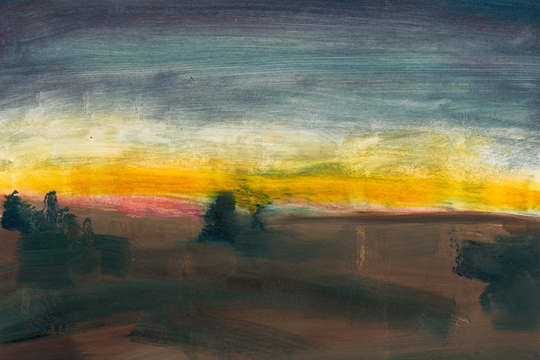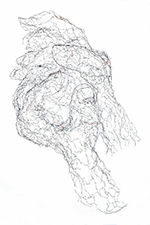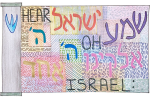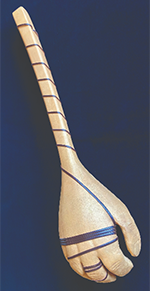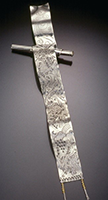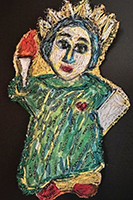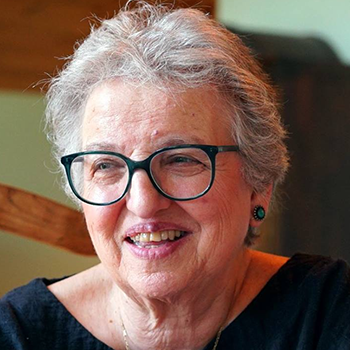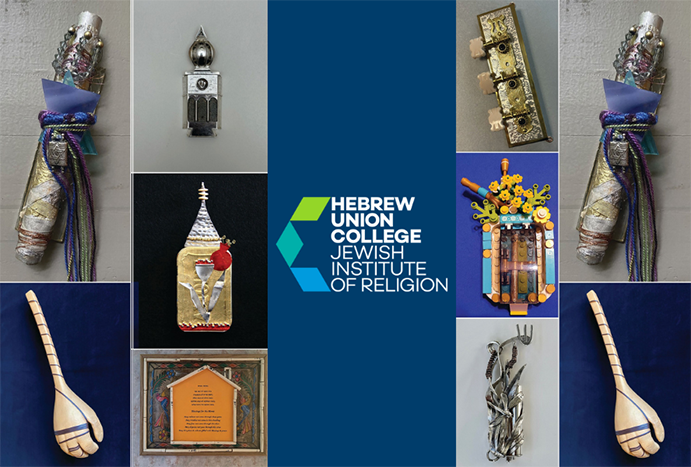
At this time of rising antisemitism, the Heller Museum invited leading contemporary artists to conceive innovative designs for a , an object dating back to biblical times, which affirms our covenant with God and publicly proclaims our faith. Seventeen artists imaginatively reenvisioned this traditional Jewish ceremonial object. Their mezuzot are on exhibition in the "Mezuzah Message" exhibit at the Heller Museum at Hebrew Union College in New York through June 26, 2025.
The mezuzah is a case bearing a (hand-lettered parchment scroll) with words from Deuteronomy 6:4-9 and 11:13-21. It contains the and continues with instructions on how to love God, keep God's commandments, and teach them to one's children.
Created with unexpected materials, reflecting diverse styles, and ranging from monumental to diminutive, these artists' mezuzot bring new energy to this traditional Jewish object. The artists shared their inspiration for creating mezuzah cases that speak to celebrating Jewish identity.
NAOMI GROSSMAN
"Our Home," 2024
Naomi Grossman says, "the mezuzah is strong and resilient, like wire and steel, but also fragile in these fragile and uncertain times." "Our Home," her large-scale wire sculpture of two hands cradling the words and scroll, projects the idea that the mezuzah protects us, our beliefs, and traditions. The words within the hands represent the values and memories that the mezuzah holds for us.
ELLEN ALT and LAWRENCE CONLEY
"Mezuzah Unscrolled," 2024
"These times call for Jews to step up and step out with bold proclamations of our Jewish identity," say artists Ellen Alt and Lawrence Conley. Alt and Conley physically expand upon the concept of the mezuzah with their "Mezuzah Unscrolled," a large retractable banner and case displaying prayers and celebrating identity with color and texture.
FRANN ADDISON
"Musician's Mezuzah," 2023
Constructed from a classical guitar tuner, Frann Addison's "Musician's Mezuzah" recalls that the first musical instrument mentioned in the Bible was the lyre, played by King David. She visually connects the lyre with the Hebrew letter shin, symbolizing Shaddai,a name for God, which also is an acronym for the phraseshomer daltot Yisrael (guardian of Israel's doors) and God's holy name on the k'laf within the mezuzah case.
BONNIE ASTOR
"Mezuzahin Space," 2024
Inspired by seeing the sky through a telescope, Bonnie Astor was awed by the moon, stars, and planets in the vastness of space. Her "Mezuzah in Space " features a central planet, with an inner scroll, surrounded by suspended Judaic symbols representing the many stars in the firmament.
MAXWELL BAUMAN
"Shalom," 2024
Maxwell Bauman artfully manipulated LEGO bricks and the Hebrew calligraphic font to legibly create his mezuzah, which proclaims " Shalom." He chose this word because it welcomes all who come in while also expressing "goodbye" and "peace" as they depart. The word also begins with the letter shin, which is the first letter in Shaddai (Almighty) that appears on the mezuzah klaf (parchment scroll).
BETH GROSSMAN
"And with These Words Shall You Bind Your Hand," 2006
"And with These Words Shall You Bind Your Hand" is the title of Beth Grossman's mezuzah, made from a carved wooden soup ladle wrapped with leather straps evoking . Grossman's piece is intended to serve as a reminder of the Jewish value of . Just as it is customary for Jews to touch the mezuzah with their hands and kiss the fingertips that touched it, this ladle provides an opportunity to make a connection with the sacred, almost like a handshake, before entering a new space.
JANET DASH
"Central Synagogue," c. 1990
Janet Dash has been creating beautiful silver Judaica for several decades. Her sterling silver mezuzah, titled "Central Synagogue," honors her many happy years as a member of that congregation with its depiction of the synagogue's distinctive Moorish dome.
MELANIE KLINE
"Tallit," 2002
Melanie Kline's sterling silver "Tallit" mezuzah takes the form of an unfurled prayer shawl, in which swirling points of light represent the heavens. The Hebrew phrases and pictures pierced through the precious metal depict the physical world and God's promises of rain, wine, oil, and grain for as long as the heavens are above the earth. The carved tablets declare the devotion in our hearts on our doorposts and are a reminder to teach our values to our children.
RANDY KLINE-GROSS
"Jewish in the Keys," 2024
Florida-based artist Randy Kline-Gross uses the spines of the invasive lionfish in her "Jewish in the Keys" mezuzah to express her environmental concerns. Lionfish, which are not native to the Atlantic Ocean or Gulf of Mexico, have venomous spines that can be both painful and beautiful. They became an ecological issue when unwanted lionfish were discarded from home aquariums into these waters, where they have multiplied for decades.
ELLEN COHEN SCOTT
"Lady Liberty," 2024
Ellen Cohen Scott's textile mezuzah, "Lady Liberty," proclaims the American values of freedom as well as the Jewish value of expressed by the Jewish poet Emma Lazarus's inscription on the statue's base. This image conveys a message of welcome and gratitude, greeting all who pass through that home's portal.
DEBORAH UGORETZ
"In and Out," 2010
"The mezuzah is a signifier of transitional space in which God dwells. According to the Sages, since it is neither in nor out, this liminal void delineates the space that is a holy space," explains Deborah Ugoretz. In her mezuzah, titled "In and Out ," Ugoretz creates a grid of small rectangular voids, simulating doorways opening inward or outward, through papercutting, a technique that dates to the late 17th century. It is believed that Jewish merchants brought the concept of creating symbolic designs out of cut paper to Europe from their visits to China.
These mezuzot exemplify the Jewish value of hiddur mitzvah, the beautification of observing the commandments, through their unique and varied artistry. They inspire us to consider how we may openly express our commitment to Jewish life today.
Related Posts

Superman Can Inspire Us to be Jewish Heroes
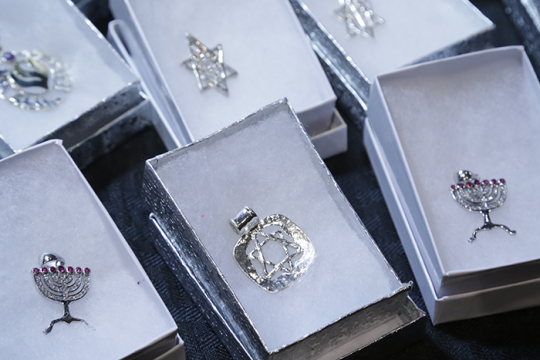
Six Symbols to Showcase Jewish Pride
